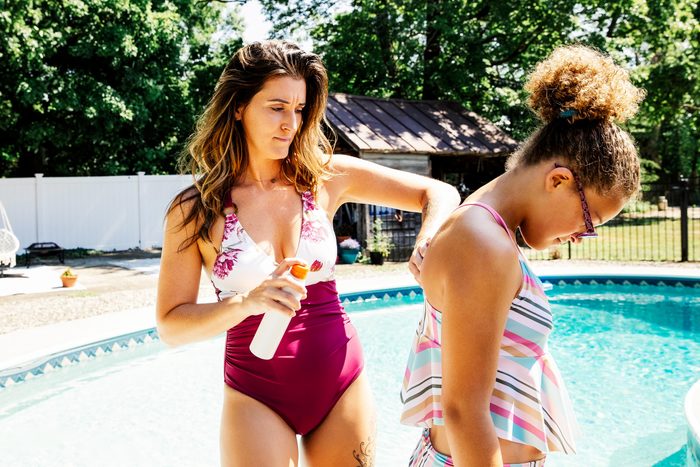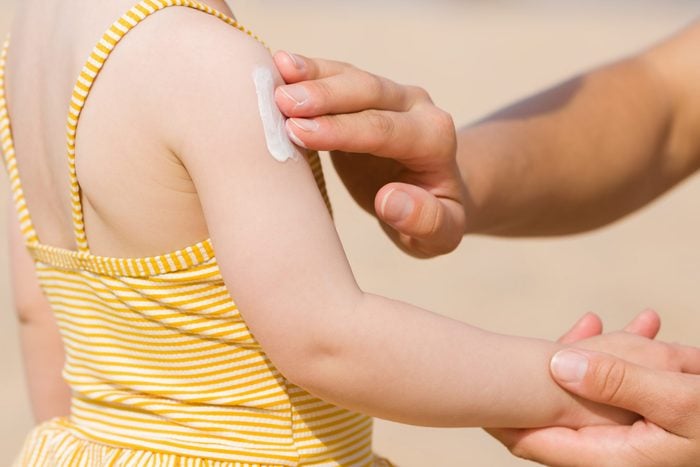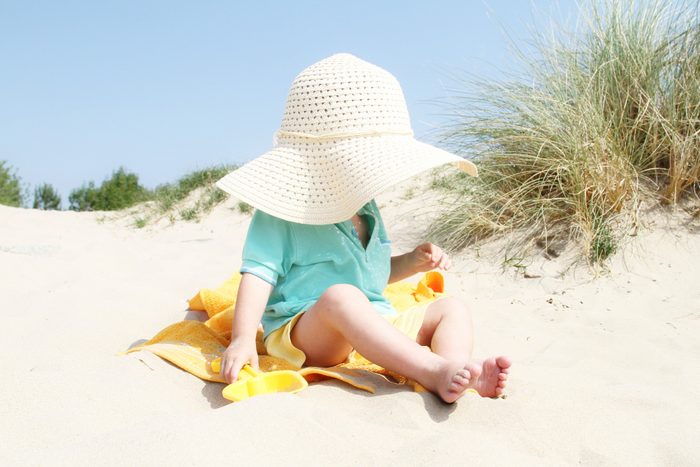
As the weather heats up and days grow longer, nothing feels better than getting outside, especially for little ones escaping the classroom for the summer. Time moving outdoors and a little sunshine can do wonders for you and your children’s health—the benefits of sunlight include improving sleep and boosting your immune system, among others.
But of course, the sun has its dangers. According to the American Osteopathic College of Dermatology, people on average get 80% of our sun exposure by the time we turn 18, and a bad sunburn in childhood can raise an individual’s risk of developing malignant melanoma later in life.
As a dermatologist and mother in sunny Texas, here are the five tips I follow most for practicing sun safety with your kids.
Spending This Much Time Outside Each Day Could Extend Your Lifespan

1. I apply sunscreen to all sun-exposed areas daily
Fifteen minutes before we head out the door, I apply sunscreen SPF 30 or above. I use one ounce per child—that’s the same amount as a shot glass—to cover their whole bodies. I cover all bare skin, such as face, neck, ears, the top of their feet, and legs.
The 4 Surprising Body Parts That Are Most Vulnerable to Skin Cancer, Says Research

2. Sun-protective clothing
When we’re going to be outside for more than an hour, I make sure my kids are wearing sun-protective clothing. I specifically choose shirts with an Ultraviolet Protection Factor (UPF). UPF measures the amount of UV radiation that can penetrate fabric and reach your skin. Although most clothing gives the skin some protection, the amount of protection varies greatly depending on the fabric type, thickness and color.

3. I have them wear a hat
The ideal hat is wide-brimmed, in a darker color.

4. We take frequent “shade breaks”
The sun’s rays are strongest between 10 a.m. and 4 p.m. Within this window, we take frequent breaks for snacks and water in a shady area.
Here’s How Much Water You Really Need in a Day, with Nutritional Scientists’ Latest Wisdom

5. I set an alarm to reapply sunscreen
Once the kids are out and playing, it can be hard to remember to reapply sunscreen. I set a recurrent alarm every two hours so I remember to apply sunscreen or use our shade breaks to do it then.
Mamas know: This can be hard when they’re busy and don’t want to break away from having fun, so to make it speedy I specifically focus on the highest exposed areas like face, ears and back of neck.